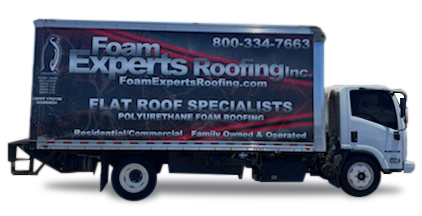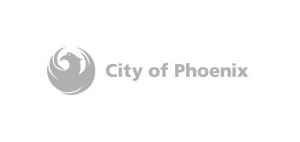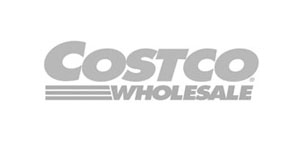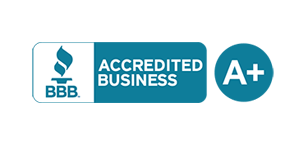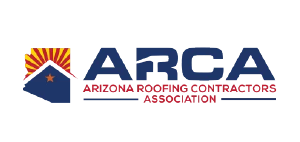Have you ever wondered how long your commercial roof will last before it needs a costly replacement?
Knowing how long a commercial roof will last is key for building owners and managers. Things like weather, how it’s built and designed, the materials used, and upkeep can all affect its lifespan. Understanding these factors helps with budgeting and keeps your building safe and standing strong for years.
Exploring commercial roofing further will help you understand what affects different materials’ lifespans. You’ll also learn when it’s time for a new roof. This knowledge is vital for making smart, cost-effective choices that protect your investment.
Introduction to Commercial Roof Life Expectancy
Figuring out how long a commercial roof will last is tricky. It depends on many things. Terms like “service life” and “roof longevity” are used to talk about how long a roof can go without needing big repairs.
Studies show that commercial roofs in the U.S. can last from 10 to 40 years. This depends on the materials and how well it’s taken care of. Knowing these details helps property owners keep their roofs in good shape and save on maintenance costs.
It’s important to understand that a roof’s lifespan isn’t just about the materials. The quality of installation and regular maintenance also play a big role. This knowledge is key to learning about what affects a commercial roof’s durability. We’ll explore these factors in more detail later.
Factors That Affect Commercial Roof Longevity
Many things can affect how long a commercial roof lasts. One key factor is roofing material durability. For instance, metal roofs last longer than asphalt shingles, especially in tough weather.
Installation quality is also crucial. If a roof is installed right, it works better. But, if it’s done wrong, it can fail early and cost a lot to fix.
The environmental impact on roofing matters too. Roofs in areas with lots of weather, like hurricanes or heavy snow, don’t last as long. UV rays can also make some roofs age faster.
Keeping up with roof maintenance helps a roof last longer. Regular checks, cleaning, and fixing small problems can stop big damage. This way, you can catch and fix issues before they get worse.
- Material composition: Pick materials that are tough.
- Installation quality: Make sure it’s done right by experts.
- Environmental exposure: Think about the weather and UV rays in your area.
- Routine maintenance: Do regular checks and fix things quickly.
Finally, don’t forget about building codes and industry standards. They set the minimum for materials and how they’re installed. Following these can really help your roof last longer and work better.
What is the life expectancy of a commercial roof?
The lifespan of commercial roofs varies a lot. This depends on many things. Like how the roof is used, how much foot traffic it gets, and if there are other installations on it.
Foot traffic greatly affects how long a roof lasts. Roofs that are often walked on, like those for maintenance or for HVAC units, wear out faster. So, roofs in busy buildings might not last as long.
Experts say commercial roofs usually last 20 to 30 years. But, this can change based on the roof material and the weather. For instance:
- EPDM (Ethylene Propylene Diene Monomer) roofs often last between 25 to 30 years.
- TPO (Thermoplastic Polyolefin) membranes typically have a life expectancy of 15 to 20 years.
- Metal roofs are known for lasting a long time, often over 30 years with good care.
Knowing what affects a roof’s life is key for building owners. They can plan better and make their roofs last longer. This way, they can get the most out of their investment.
Signs Your Commercial Roof Needs Replacement
Spotting roof wear early can save a lot of money and avoid big problems. Business owners should watch for roof damage signs to know when to replace a commercial roof. Signs like constant leaks, visible wear, and high energy bills mean it might be time for a new roof.
Delaying a roof replacement can lead to big risks. Damage can cause structural problems, higher repair costs, and safety issues for people inside. Catching these problems early and acting fast can help avoid these risks.
Here are some clear signs it’s time to talk to roofing experts:
- Frequent Water Leaks: If leaks keep coming back, your roof is failing.
- Visible Wear and Tear: Look for cracks, blisters, or missing parts on your roof.
- Energy Inefficiency: A sudden jump in energy bills could mean your roof is not insulating well.
- Mold and Mildew: These grow from too much water and can harm your health.
- Structural Damage: If your roof is sagging or your ceiling is cracking, there’s a serious problem.
When you see roof wear, it’s important to get expert advice. Roofers can give you a detailed check-up and suggest the best fix for your roof. They help you find the right solution when it’s time for a new roof.
Cost Considerations for Commercial Roof Replacement
Knowing what affects roofing costs is key for business owners. The roof’s size is a big factor. Larger roofs need more materials and work.
The type of material also matters a lot. For example, TPO (Thermoplastic Olefin) has different prices. This can change how much you spend.
Labor costs are another big part. How complex the installation is affects the price. Roofs with many layers or special designs need more skilled workers and time.
Thinking about long-term costs is also important. Choosing durable materials might cost more upfront. But, it can save money in the long run by needing fewer repairs and replacements.
Financing options help manage costs too. Businesses might get loans or other funding to pay over time. There might also be tax benefits to help cover the cost. With good planning and financial strategies, businesses can handle the cost of a new roof.
Maintaining Your Commercial Roof for Longevity
A good commercial roof maintenance plan is key to a long-lasting roof. Regular checks and a proactive care approach are crucial. They help keep your commercial roof in top shape.
Here are some best practices for roof upkeep:
- Do thorough inspections twice a year, in spring and fall. Look for leaks, water damage, or weak spots.
- Set up a maintenance schedule. Clean debris, check for water pooling, and ensure good drainage.
- Fix issues quickly, like patching leaks or replacing damaged shingles. This prevents bigger problems.
Adding preventative roof care to your routine can prevent unexpected damage. Hiring professional roof maintenance services has many advantages:
- They offer expert advice and solutions for your roof’s specific needs.
- Working with trusted pros can lead to better and faster maintenance, extending your roof’s life.
- Professional services often come with warranties, giving you extra peace of mind.
Studies show a solid maintenance plan can really extend roof life.
Consistent upkeep is essential for a long-lasting commercial roof. With a detailed maintenance plan, you can extend your roof’s life and protect your investment.
Conclusion
Knowing how long a commercial roof lasts is key for building owners and managers. It helps them make smart choices and protect their investments. By looking at what affects roof life—like the material, weather, and upkeep—businesses can manage their roofs better. This way, they can make their roofs last longer and keep their property’s value up.
Keeping up with maintenance and choosing strong materials can really help a roof last longer. The lifespan of roofs varies, depending on the material. So, it’s important to pick the right one for your needs. Catching problems early can save a lot of money and hassle, showing how important regular checks are.
Helping building owners and managers understand their roofing needs can save them money and give them peace of mind. By following the best roof management practices, roofs can last longer. This leads to a safer and more sustainable future for the property.





